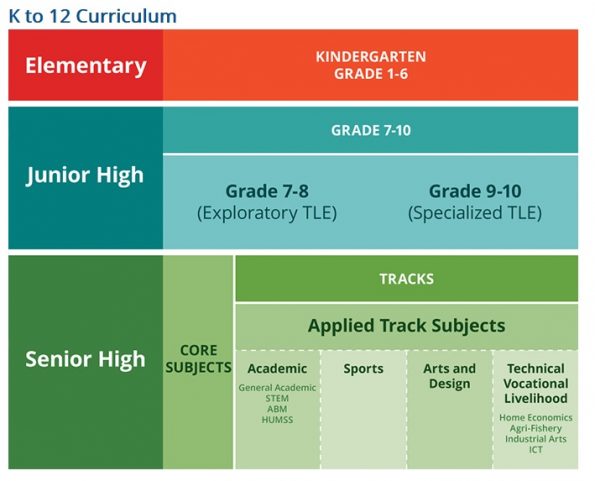Hello, again! This is Suci Layla Utami reporting about the curriculum of the class that I teach.
How are you for today?
Anyway! Since I have told you about how PSU looks like, let's look deeper at the curriculum they use, shall we?
First and foremost, PSU uses K to 12 curriculum for teaching the younglings. The name is K to 12 because the curriculum covers students' education for 12 years from kindergarten to six years primary education, four years of junior high school until two years of senior high school.

In PSU, I teach grade eight to nine. The goal for teaching students, the government tries to shape their young generations as such:

In PSU, I teach grade eight to nine. The goal for teaching students, the government tries to shape their young generations as such:

Credits to: https://www.spideylab.com/k-12-philippines-curriculum-guides/
PSU Bayambang has different format in making their lesson. Their lessons were written in two
ways the semi-detailed and detailed lesson plan. The lesson in the Philippines are divided in different parts. First is the objective, it is your aim or goal to be achieved after the class discussion. Your objective is divided into three: cognitive or knowledge, psychomotor or skills and affective or attitude. Preliminary Activities, this include the prayer, checking of attendance and review. Presentation of the lesson, this a time that the teacher presents his or her new lesson. Next is the discussion wherein the teacher engaged his or her students in learning. Generalization, this is a part where the students give their own understanding to the new lesson. Not only that but also the summary of the topic. Evaluation, where you are going to assess the students. This is a part wherein you are going to achieved your objectives. In assessing your students you can use a rubrics. Most of the teachers use Performance Task to assess the students. Last, the assignment. The purpose of assignment is to maintain the learning even outside the school.
On the
teaching plan here in the Philippines is quite different. They do
not have this core standard and are instantly broken down into specific
learning objectives. And it's all based on their curriculum guide.Their
teaching plan provides detailed learning resources, varied learning activities,
and learning assessments. I have observed that the procedure or flow of the
lesson are student-centered, while their assessments are performance based
which asessed by rubrics or mechanical ratings.
PSU Bayambang has different format in making their lesson. Their lessons were written in two
ways the semi-detailed and detailed lesson plan. The lesson in the Philippines are divided in different parts. First is the objective, it is your aim or goal to be achieved after the class discussion. Your objective is divided into three: cognitive or knowledge, psychomotor or skills and affective or attitude. Preliminary Activities, this include the prayer, checking of attendance and review. Presentation of the lesson, this a time that the teacher presents his or her new lesson. Next is the discussion wherein the teacher engaged his or her students in learning. Generalization, this is a part where the students give their own understanding to the new lesson. Not only that but also the summary of the topic. Evaluation, where you are going to assess the students. This is a part wherein you are going to achieved your objectives. In assessing your students you can use a rubrics. Most of the teachers use Performance Task to assess the students. Last, the assignment. The purpose of assignment is to maintain the learning even outside the school.
Both grade I taught really focused on how the students understood English by its culture, not just the grammar. In Philippines, they taught grammar for elementary students. Afterwards, they started teaching literature to relate daily life with the literary piece. I taught "Beowulf", "Africa" by David Diop, "Le Morte D'Arthur" and "The Pardoner's Tale". Those pieces were surely valuable to be taught to the children as the moral value was timeless.
The teaching of literary piece was not merely for the students to know about it. It also was taught for the students to remember what was the story about and what kind of consequences they would have in case of having similar problem. The story might be old, but the lesson we can get is timeless.
Students were always given evaluation near the end of teaching. It was done, to make sure students understood (not remembered) about the material that had been taught by the teacher. (Details can be seen from my lesson plan that I will upload later)


No comments:
Post a Comment